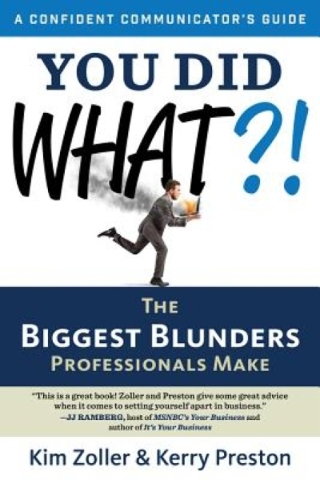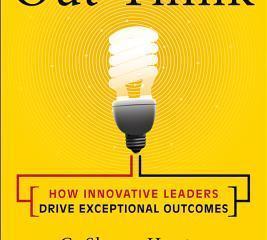

“You Did What?! – The Biggest Blunders Professionals Make,” by Kim Zoller and Kerry Preston (Career Press, $14.99)
A recent study by Harvard University revealed that twice as many people lost jobs for “failure to deal successfully and professionally with other people” than for strictly performance-related issues. What causes this failure? Interpersonal communication issues.
The issues start with body language because “55 percent of the impression you make is nonverbal.” The wrong body language blunts your message. Tips: Maintaining eye contact shows that you are devoting attention to the other party. Smiling (even if you fake it, the other party’s brain won’t realize it) when you talk creates rapport. Posture plays a role, too. When you slouch, you send negative vibes. When you walk, show confidence by having your shoulders back and your chin slightly elevated. When someone stops in your office, standing up to greet her/him shows respect.
Small talk plays a role in making connections and solidifying relationships — as long as you avoid contentious topics like politics, religion, gossip, money (especially compensation) and private matters. There are other small talk “don’ts.” Don’t monopolize the conversation; connection requires two-way communication. Don’t interrupt or try to one-up the other party; doing either shows you don’t value their viewpoint.
Email etiquette comes next. Before clicking send, ask yourself three questions: 1. “What message am I trying to send?” 2. “What is offensive to me? (Often the things that offend you are likely to offend others.)” 3. “Is the recipient going to understand the meaning of my message?” By answering the questions, you give yourself time to review the message’s clarity and ensure you’re not sending an emotional response. Reread to proofread, too. Errors in spelling and grammar tell the recipient(s) that you’re not paying attention to content. If you’re not paying attention, why should they?
There’s also advice covering dress code, office/cubicle appearance and etiquette for meetings, telephone and travel.
While the communications cues and don’ts seem like common sense, keeping them in mind when you interact requires attention.
“5 Gears: How to Be Present and Productive When There Is Never Enough Time,” by Jeremie Kubicek and Steve Cockram (John Wiley & Sons, $25)
Picture your life as the driver of a sports car with a five-gear manual transmission. You control all upshifts and downshifts as you start, brake, navigate curves and speed down straightaways. Each gear has a purpose that maximizes engine performance and response in given situations. Each gear also has limitations; when your tachometer approaches redline in a gear, you have to upshift or back off the throttle. With this metaphor in mind, here are the five gears of productivity:
First gear: “Learning to recharge” — Always running at full throttle means you’ll run out of gas quickly. When you’re out of gas, you’re out of the race. Introverts and extroverts have different ways of recharging, but have two in common — getting enough sleep and exercise.
Second gear: “Connecting deeply” — Face-to-face interaction deepens every relationship. When you get home, ignore the TV and the iPad and talk with your family. At work, important things should be discussed in person.
Third gear: “Why being social matters” — The seeds of business-building are planted in this gear. People prefer doing business with those they like. A social setting highlights personality.
Fourth gear: “Leading in a task world” — Don’t fill your day with “reaction action.” To become more productive, learn to distinguish progress from busyness.
Fifth gear: “In the zone” — When you need to concentrate on a task/project, don’t allow interruptions (i.e., email, phone, people stopping by). But remember that you need to downshift during your day (particularly into third gear) to recharge your batteries.
Key takeaway: Make sure your life uses all five gears; getting stuck in one can make the drive to “destination success” an arduous one. When you come to a dead end, shift into reverse.
Jim Pawlak is a nationally syndicated reviewer of business books.






